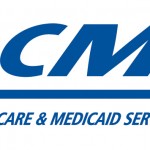 A new website will help explain the insurance marketplaces, called exchanges, where Americans will start buying health insurance Oct. 1 under the Affordable Care Act.
A new website will help explain the insurance marketplaces, called exchanges, where Americans will start buying health insurance Oct. 1 under the Affordable Care Act.
WASHINGTON — The government launched a new webpage, training videos and infographics Monday to help Americans better understand the health insurance exchanges that will launch Oct. 1.
“Everywhere I go, I meet people who are excited about the marketplaces and hungry for information,” Health and Human Services Secretary Kathleen Sebelius said Monday.
About 7 million Americans are estimated to start buying health insurance as part of the new law, but a new survey shows they don’t understand the basics of how health insurance works or is provided.
Want to publish your own articles on DistilINFO Publications?
Send us an email, we will get in touch with you.
Her remarks Monday came as a new survey showed only 14% of adults polled by Carnegie Mellon University of Pittsburgh understood four questions about basic insurance terms such as “deductible” or “copay.”
“I have a Ph.D. in economics, and even I have a hard time making heads of insurance,” said George Loewenstein, a behavioral economist and lead author of the study.
The new features from HHS are available at www.healthcare.gov, where people may now create a user name and password for the exchange website. There’s a new call center to answer questions for small businesses on the SHOP exchange.
“We are on target and ready to flip the switch on October 1,” Sebelius said. “We know there’s still work to do.”
Sebelius said the department has lost about $15.5 billion from its budget due to the mandatory cuts, called sequestration, that started March 1. But travel by department officials to promote the 2010 health care law remains a priority, she said. The department has made cuts in other areas, such as printing and conferences.
The announcement comes as several groups are doing battle over insurance confusion. Some, such as Enroll America, seek to get as many people signed up on the new exchanges as possible. Others, such as Americans for Prosperity, are citing people’s confusion about insurance as evidence the 2010 health care law is a bad idea that should be repealed.
“ObamaCare is confusing and costly for doctors and patients alike,” Americans for Prosperity president Tim Phillips said in a press statement accompanying the group’s advertising campaign against the law. “Doctors are concerned that they may not be able to provide care their patients deserve and are worried about what will happen to their practices.”
Other groups, such as FreedomWorks, a conservative non-profit organization, have also targeted young people, saying they should work to kill the law by not purchasing insurance and that the law causes their insurance costs to go up. They argue that if healthy people don’t sign up for the exchanges, the high costs of sick or older people will kill the exchanges.
“I think it’s a pretty dismal effort underway,” Sebelius said, adding that not having insurance could lead to bankruptcy and a lifetime of instability. “I do know that that population is front and center on insurers’ target list.”
Insurers have aimed advertising at young people so the exchanges will be profitable. So far, exchange policy costs have been less than projected by the government. Two states have said premium prices will go up as much as 40%, but Sebelius said they averaged the costs of all policies, including the highest-end policies that most people will not purchase, to come up with those premiums.
Other groups say the Affordable Care Act remains in place despite 40 attempts in the U.S. House of Representatives to repeal it. The website WebMD and groups such as AARP and Change Healthcare have created educational videos, question-and-answer sessions and Web-based education programs to help people better prepare to buy insurance.
“The information available now is almost nil, so people don’t know how to shop,” said Linda Blumberg, an expert on private insurance at the Urban Institute. “Insurers don’t even have to provide a copy of the plan before you buy it.”
The exchanges for the individual market will be for people who don’t have insurance now, and not for those who have insurance through their employers or through Medicare or Medicaid. Those who make less than 400% of the federal poverty level, or about $92,000 for a family of four, will be eligible for immediate subsidies to apply toward the cost of their insurance.
Because of the law, consumers will be able to compare plans online side-by-side for prices, benefits and out-of-pocket expenses, and insurers are now required, because of the law, to kill the small type and explain things clearly.
However, they still need to know that a premium is the amount they pay over the course of a year for their policy, that a deductible is the amount of money a person must pay before his insurance will pay a claim, and that a subsidy is the amount the government pays for those who purchase policies through the exchanges and who make less than 400% of the federal poverty level.
“Many people entering the exchanges will be exposed to insurance for the first time,” said Lisa Zamosky, a WebMD health policy expert. “We’re going to break it down in a very basic way.”
The site will explain that people need their Social Security numbers, income levels and a basic understanding of their expected medical costs.
“I think the need for information is pretty apolitical,” Zamosky said. “You can love it, you can hate it. It’s the law. It’s happening.”
Date: August 5, 2013









